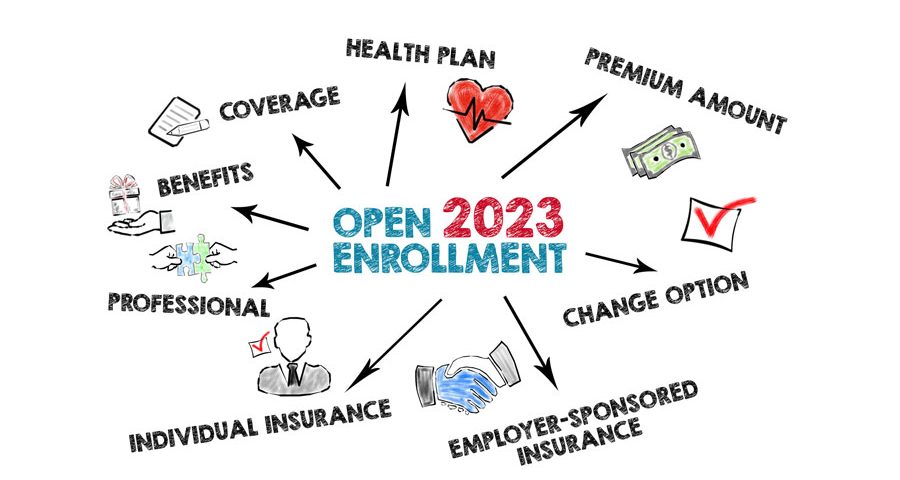By: Nancy Verdin, Graduate Assistant, SDSU Social Policy Institute
Between the months of October and January, the air is electrified with a blend of celebration and anticipation. It’s a season where homes twinkle with the warmth of Christmas lights, where we gather with cherished loved ones to share moments of grace, and where we plan promises for the new year ahead. However, amidst the whirlwind of festive joy, a subtle yet crucial responsibility requires attention: Open Enrollment – a task that safeguards our well-being and sets us up for a journey of optimal health.
What is open enrollment?
Open Enrollment Periods (OEPs) are designated periods each year, October through January, where individuals have the opportunity to adjust or modify their health insurance plans. This time is crucial if you are thinking of switching to a different plan or you want to acquire additional coverage. If you try to make changes to your health coverage outside of this designated period, you might not be able to and may face serious road blocks.
There are different OEPs for Medicare and Covered California, so make sure that you check in with your current health insurance provider.
Why should you care about open enrollment?
There are several reasons why someone might want to change their health care coverage.
For instance, imagine you’re currently enrolled in Medicare Part A (hospital insurance) and Part B (medical insurance). Now, imagine receiving a recent diagnosis for a chronic condition that demands ongoing medication. While the news might initially induce stress, it also opens the door to ensure your health insurance is tailored to support you effectively.
In this situation, enrolling in Medicare Part D (prescription drugs) may become a priority to ensure your essential medications are covered by insurance.
Open Enrollment is the time to explore and assess different coverage options available to you.
How do I get started?
If you currently have Medicare healthcare insurance you can visit California Health Insurance Counseling and Advocacy Program (HICAP) for more comprehensive guidance.
What if I don’t qualify for Medicare or don’t have health insurance?
If you find yourself ineligible for Medicare or without health insurance coverage, you may still be eligible to receive coverage through Covered California.
Taking charge of your healthcare coverage is a vital step toward managing your well-being. Whether you’re exploring changes to an existing plan or seeking new coverage, empower yourself with the right information to make an informed decision about your health.

